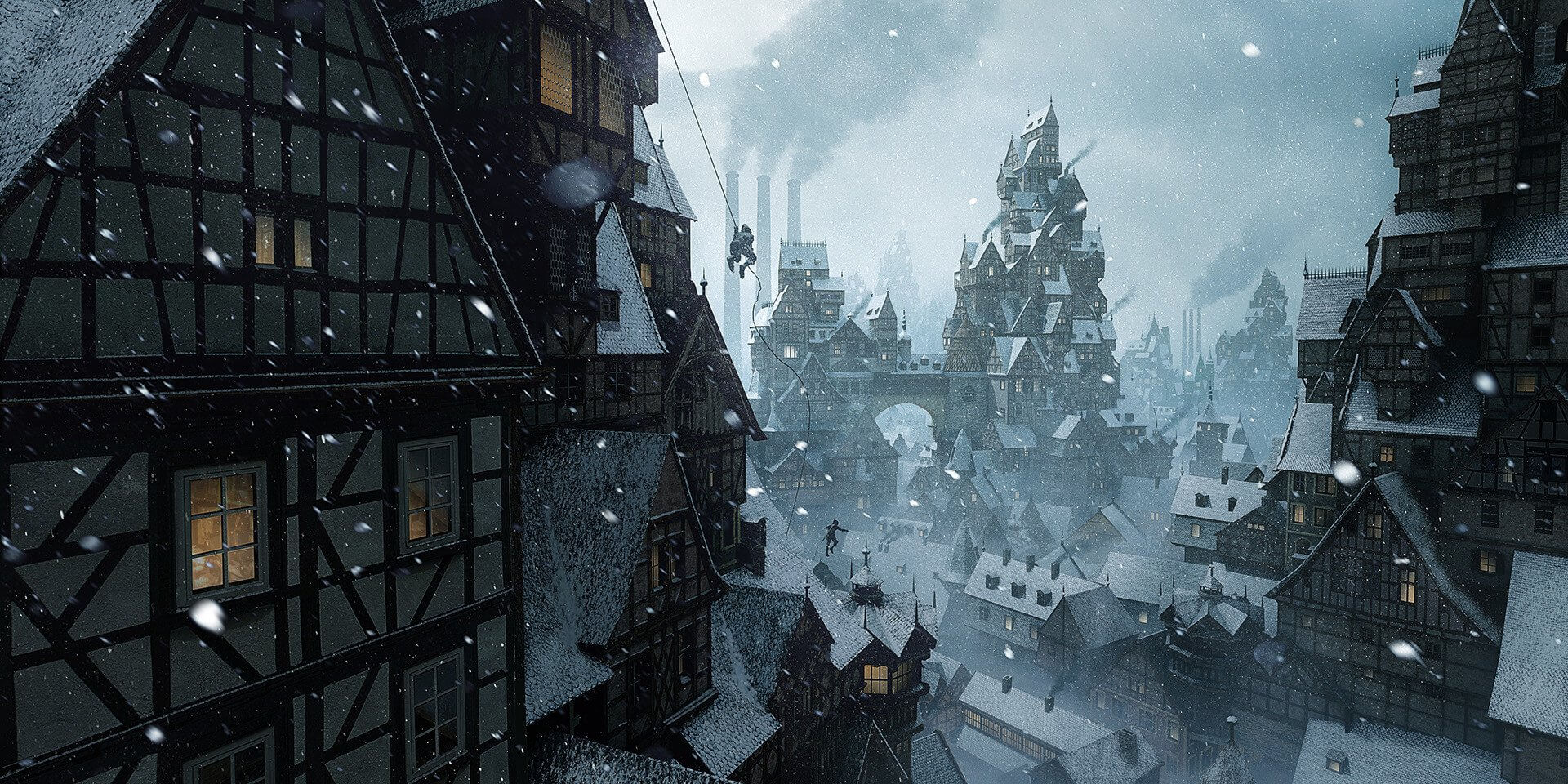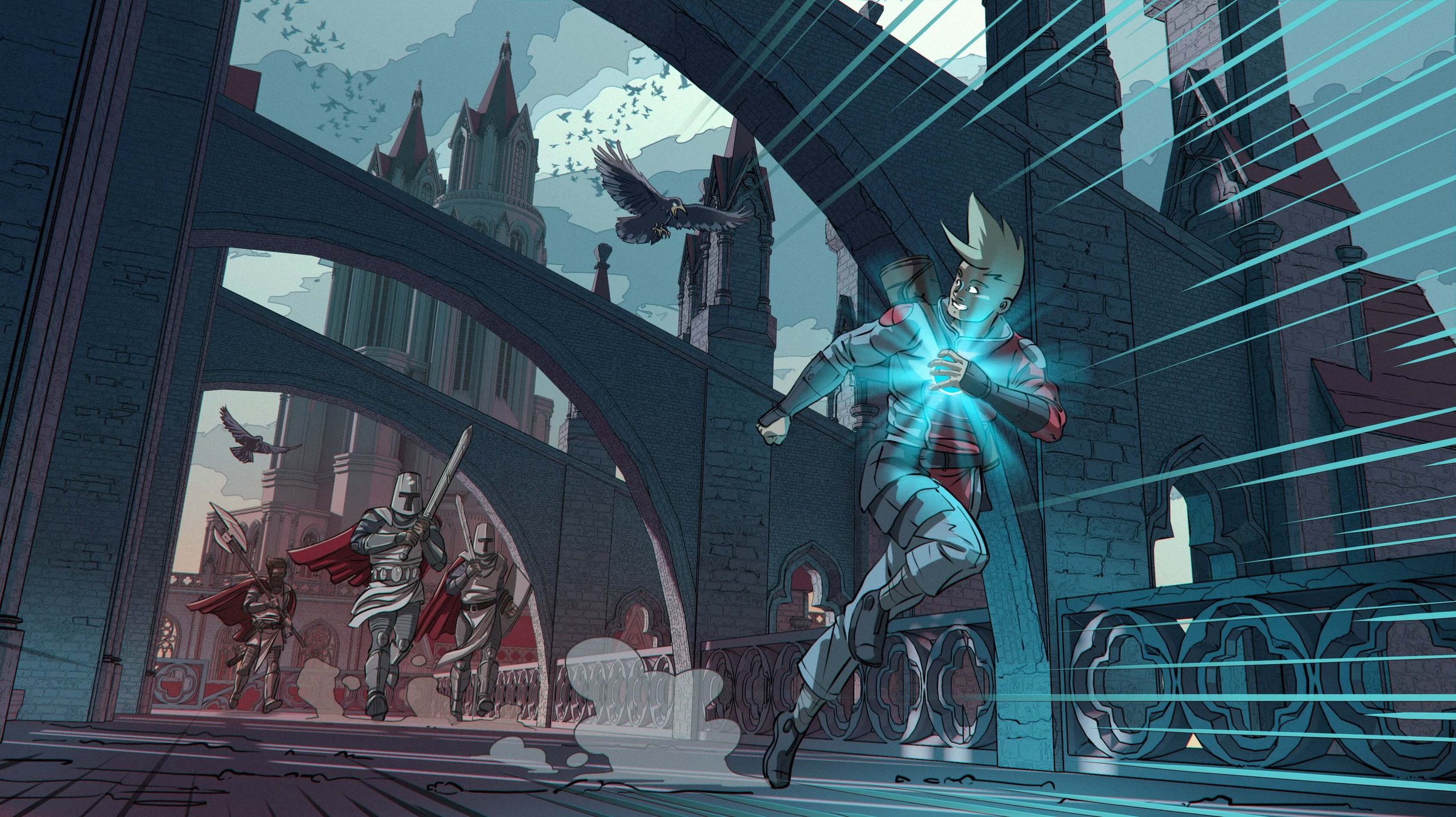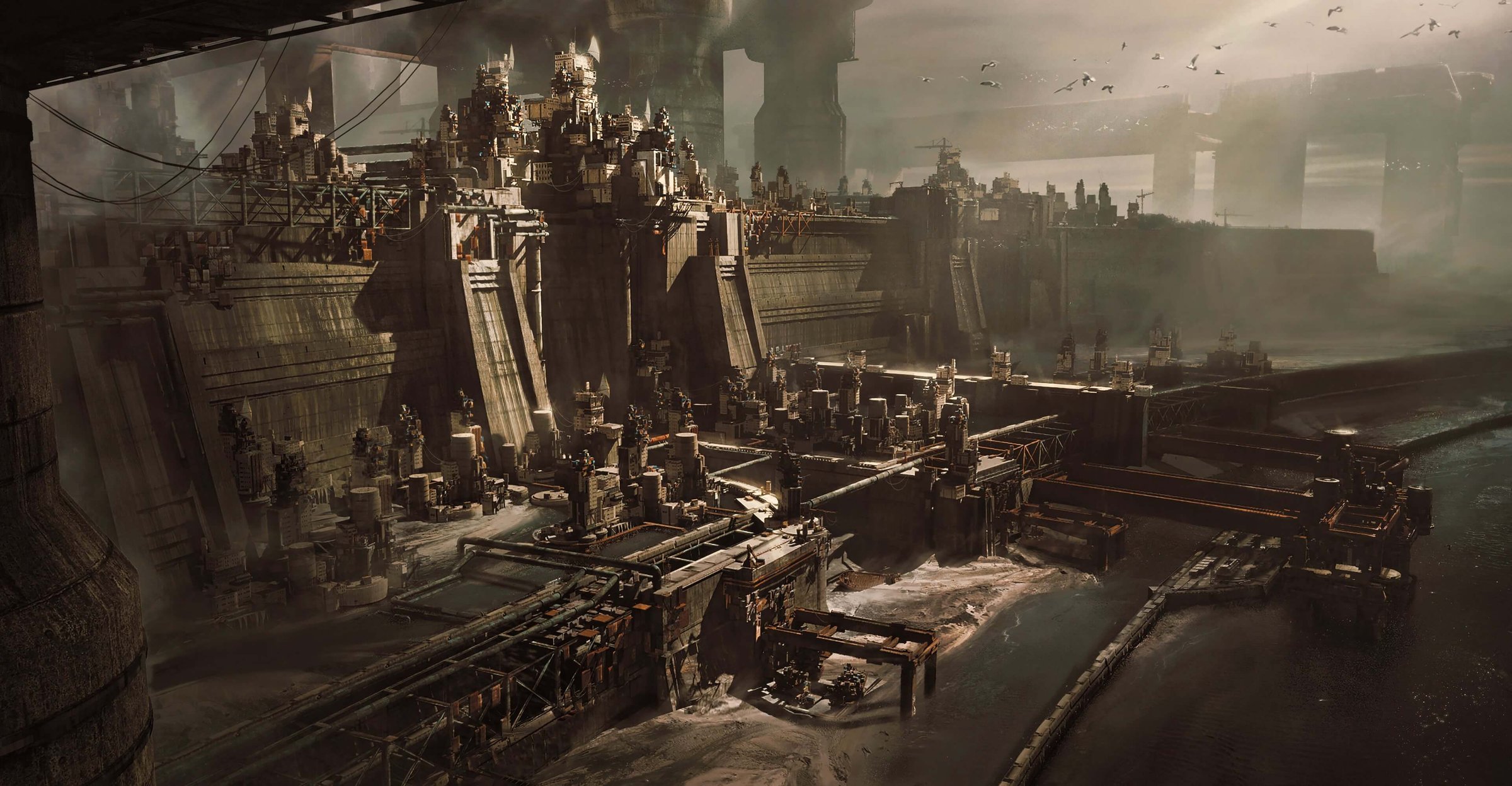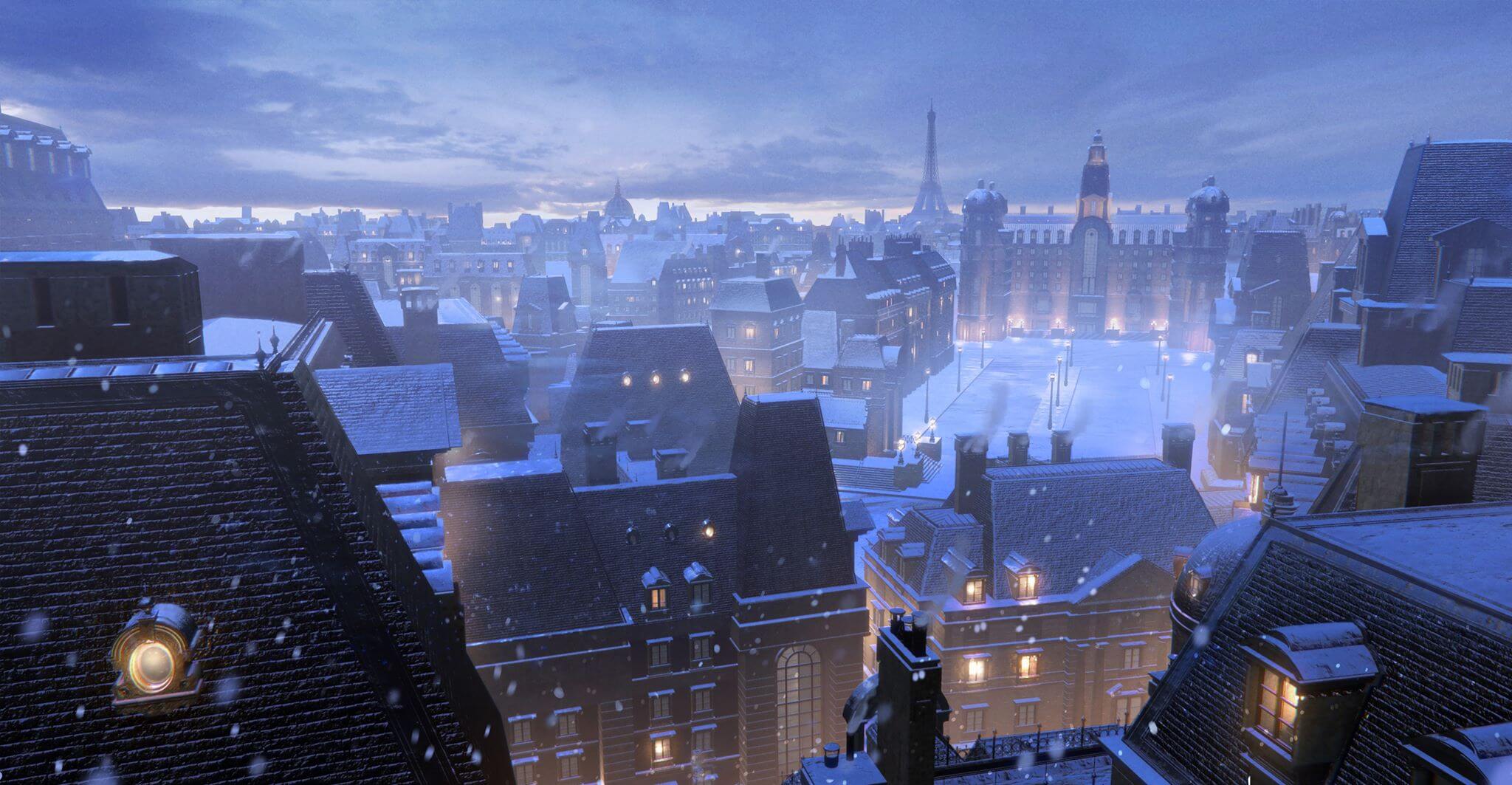
What is the story or emotion you wanted to evoke in this piece?
This is one of those pieces where I had a pretty strong vision about the concept. Basically I was thinking about an industrializing medieval village that experienced rapid expansion in a fashion where the inhabitants started stacking buildings on top of each other when space is running out. As you’ll see the mood wasn’t set in stone and changed quite radically from what I was originally thinking about.
Can you take us through a step by step as to how you created it?
First, I did this crappy sketch really fast, mostly to just test out the general composition.

I didn’t do any modeling myself. I jumped straight into Octane standalone where I started dropping in the Fairy Tale kit for compiling. I had already exported the objects as separate .obj files so they’re pretty easy to move around in Octane. I started building the base of the village by making a roughly square-shaped block which I can copy around. I was thinking this would be a night scene so I added a random light texture into the emission node of my terrain to mimic street level lights.

Here I copied my initial block and rotated the parts around to break repetition and avoid a grid-plan-feel to the town.

I grouped the above set of blocks and again copied and rotated the parts. It’s starting to feel like a city.

Rinse and repeat one final time. I don’t worry too much about the large empty squares evident here. The camera will be low enough above the rooftops that you never really see ground and besides the gaps can help to bring more depth to the image.

I made a separate group for my tower. Loosely following the sketch I just stacked models and saw what looks good (from roughly one direction). Then I copied this around and rotated it for a different look.

I looked for some camera angles where my town looked good and somewhat dynamic. I settled for this one.

Moved in my towers for a nice composition and depth.

As I thought this would be a night scene I initially made it quite dark, but with a clear directional light indicating moonlight. I don’t usually worry too much about finding the proper mood or color scheme in 3d, but the light direction is pretty fundamental. As a rule I usually go for a pretty flat lighting which I can then adjust darker or lighter in photoshop without losing too much information. In hindsight this particular raw render seems darker than necessary.

In photoshop I focus on finding the general mood and lighting as early as possible. Here I used a z-depth render pass to mask a nice atmospheric perspective and painted in some fog in the ground level.

In most projects (sadly not every one) there’s a period where the piece starts to carry it’s own weight and things start to click. When I get that feeling I know I can relax a bit knowing the painting is probably going to turn out good. In this project that period was about a second long. I played around with a reflection render pass screened on top of the painting and cranked the contrast to near maximum. What I got was a really convincing impression of a thin layer of snow on the rooftops. It also pops out a lot of shapes quite nicely. This changed the direction of the mood and the whole painting for me. One of those happy little accidents...

I started to lighten up the mood and it turned more into an early winter morning time of day. I added some photo textures into critical areas and lit up some of the interiors for a more lived-in feel.

I painted in a bunch of smaller and larger details. Chimneys, smoke, rooftop accessories, snow, more fog etc.

A snowstorm works really well with the atmospheric effects in this piece. I used a few different snowfall textures on several layers. The human figures give the image some story and extra dynamics.

“Final” effects. Color balance, curves, color overlays, high pass etc. These are usually some things I incorporate on top of everything when I’ve got the general mood down and adjust them along the way when finalizing the painting.

Altogether the whole process took about 1.5 working days. This quality of finish in that time from scratch would have been quite impossible without the use of KitBash assets.
Incredible, Tarmo! So how long have you been an artist? What is your “origin story”?
That’s both a short and a long story :). At the time of writing I’ve been freelancing full-time for about nine months. Before that I worked as an architect for a long time. My process for becoming an artist though is even longer.
As a kid I naturally grew up with games and movies from as far back as I can remember. Of course I liked drawing a lot also. I started getting interested in concept art back in the early 2000s. There was all this amazing art in sites like conceptart.org and not really many shreds of information of how they were made aside from some Gnomon workshop tutorials. It all seemed like magic to my young mind, and I was completely oblivious to even the basics of design and aesthetics. Around the mid-2000s I got my Wacom tablet (which I still use) and started doodling stuff. I think the biggest influence back then I got from the artbook, The Art of Oddworld Inhabitants: The First Ten Years published in 2004. It introduced me to some of the design processes behind creating stunning visuals for games. It’s still my favorite game art/concept art book and has been an endless source of inspiration in the past years.
In 2006, when I graduated from high school I had to decide my professional direction. Concept art still was not something I thought I would be even capable of doing professionally, so it wasn’t really an option at that point. I opted for studying something safer and more socially established in architecture. For a long period my painting/design activity unrelated to architecture was virtually nonexistent, but I always returned to it from time to time.
In 2013, I had a pretty good idea of the general working life of an architect and then one day I just got the feeling “I don’t want to do this for the rest of my life”. From then on I picked up painting on a much more regular basis and with the help of online tutorials (that had multiplied by that point) started to improve my skills more meticulously in my valuable free time. Suddenly digital art became almost an obsession that I couldn’t drop although I did feel like giving up a few times. My design background in architecture definitely helped but it still took me years before I was starting to feel somewhat professional in digital art. I started receiving queries through ArtStation and did the odd freelance job here and there. In 2018 when the queries started getting more frequent I decided to properly try freelancing as an artist and it turned out a lot better than I expected. I took leave from my day job and never went back.
We've just seen your process creating an image, but what is your process before starting a project?
It depends a lot on what I’m working on. Many of my personal projects are strongly based on a vision I get inherently before drawing a single line. Of course I think you shouldn’t waste your time trying to reinvent the wheel from scratch if there’s a reference for it. However, if I feel visually familiar enough with the subject matter I may not look at any references before starting. If not, then I research it. I have a perpetually growing library of reference photos that I’ve saved and taken over the years.
In any case, I almost always make an initial sketch on paper to put down the general design ideas and rough composition. If I know I’m going to rely on 3d, the sketch can be really quick and rough. If I’m going 2d I like to spend more time finding good silhouettes and composition with a somewhat correct perspective.
For clients I usually make more refined sketches than I would do for myself.
And finally, why do you make art?
Art and design is an endless process of improvement which is something I’m inclined to. I love to design and the fact it never gets easy, making you push harder with each project. There’s also literally nothing I could spend more of my time doing than just sitting with a piece, painting away, and wrestling with it to make it better.
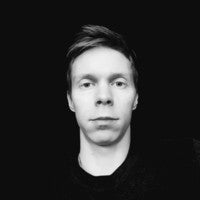
For more of Tarmo, check out his website here.

